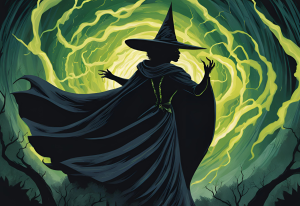The lights are dimmed and sweat is dripping down my shirt. Amongst a large crowd, the girl brushing herself against me appears to be cute enough. Our hips stop moving for only a moment. I’m hoping for a number, maybe even a short kiss, one step at a time. I hear the speakers start to rumble and all potential is interrupted. The girl hears the back bass bounce and recognizes it as Wiz Khalifa’s single “No Sleep.” She immediately forgets about me and swiftly moves toward her posse of friends, all of them screaming while frivolously throwing their arms in the air.
Yes, this particular situation is fictional, but realistic in terms of formulaic radio rap and its current demographic. Popular hip hop artists these days are determined by their appeal to pre teens and teenagers. As a kid, my mom refused to let me buy a copy of The Eminem Show because it recommended “parental advisory.” Mainstream lyrics seem to mean nothing to parents these days, with 10-year-olds listening to tracks about smoking marijuana and the mistreatment of women. It’s simple; have an energetic beat with a catchy chorus, fill it with some average rhymes and there you have it, a simple formula for a hit single. This formula is evident on the March 17 cover of Rolling Stone which portrays Pittsburgh rapper Wiz Khalifa one eyelid winking, rocking a leather jacket, a white button down and sporting a tuft of died yellow hair in his otherwise black afro. The photo is a copy of Jimi Hendrix, arguably one of the greatest musicians of all time. The photo is supposed to be a mirror image of Hendrix, suggesting Khalifa has similar modern day popularity with the American youth. However, people fail to realize, Wiz Khalifa isn’t a real musician. Guess how many songs he wrote on his most recent album Rolling Papers? Zero. Not a single lyric is original. I’m merely using Wiz Khalifa as an example to make a point about the current generation of music. Wiz and most other popular hip-hop artists these days are merely images deemed marketable by record labels as to make money.
On Aug. 28 Odd Future’s Tyler, The Creator took won MTV’s Video Music Awards’ Best New Artist. It was a relief to see an unconventional artist beat out mainstream stars such as Wiz Khalifa and Big Sean. It’s fair to say Tyler and Odd Future are now mainstream, but this brings up an interesting point. What is rap or hip-hop? It originated as a means of expression for heritage and cultural issues. Artists like Wiz Khalifa, Big Sean and Drake produce these club jammer formulaic hits, selling their souls to the industry in exchange for fame and fortune. They forgo their power as direct influences to the youth of our country and rather than spreading awareness about social issues, fill their listeners’ heads with garbage to sell records. I have no respect for these artists. You look at Tyler, The Creator and say he did something different. Tyler developed his own style and didn’t change it according to what some record executive directed him. He became famous because people dug his real style, not the fake image pushed on him. To me, when you have stayed true to your style, to your feel, to your groove, this is what it truly means to achieve real success in the music industry.







Be First to Comment